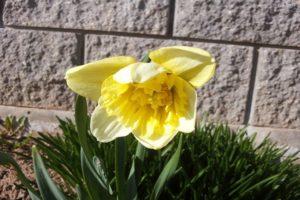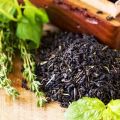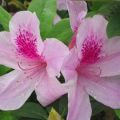Description and characteristics of the Chanterel narcissus, planting and care rules
Narcissus of the Chanterel variety is an ideal plant for landscaping a house or suburban area. This spring flower has a bright yellow cap and a delicate aroma, which is loved among gardeners. It goes well with other spring plants. It grows well, therefore it requires a transplant. Otherwise, the bulbs will interfere with each other, which will affect flowering - the inflorescences will become smaller and get lost in the foliage.
Description and characteristics of daffodil Chanterelle
The inflorescences of the daffodil Chanterel have an interesting structure - pale yellow petals surround an oversized bright yellow funnel-shaped crown. Because of this, they resemble an orchid. With proper care, their diameter reaches 10 cm. The leaves are flat, about 30 cm in height, without a stem.
This plant came to Russia from southern Europe. The ideal climate for it is the middle zone of the European part of the country, with cool summers and not very frosty winters.
Main advantages and disadvantages
Daffodils are photophilous, therefore they bloom poorly in the shade. The site for planting is selected in such a way that the shadow from nearby flowers and shrubs does not fall on them.
Suitable for decorating open spring flower beds, quite unpretentious and easy to maintain. He is not afraid of spring frosts, but if he is not dug up in the fall, then before the onset of cold weather, the garden bed should be covered with a small layer of peat, leaves or straw. It prefers to grow in fertile, drained soil, therefore it requires periodic loosening.
After flowering, daffodils begin a long growing season, which lasts almost all summer. At this time, abundant watering is required, but care must be taken that the water in the garden does not stagnate.
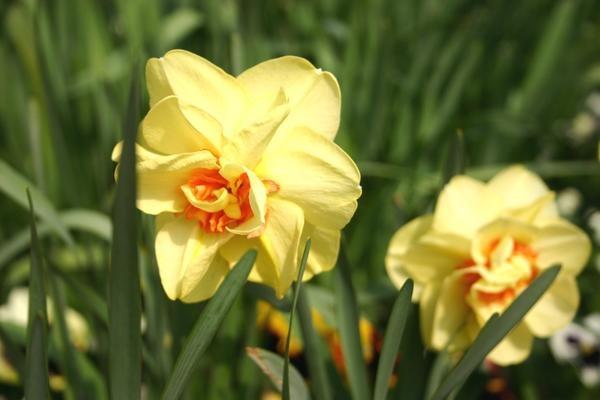
Features of growing a daffodil
Narcissus Chanterel is easy to care for, but you shouldn't forget about him. This is a varietal plant, so the planting process should be approached carefully.
When to plant
Daffodils are propagated by bulbs. Flowering will come in early spring if planted from early mid-September to the first frost. If you do this later, then the culture will not have time to take root and, most likely, will die.
Preparation of planting material
In order for the daffodil to take root well and release flowers in spring, it is enough to choose high-quality material for planting.
The ideal bulb for propagation should be at least 3 cm, free from damage and rot.
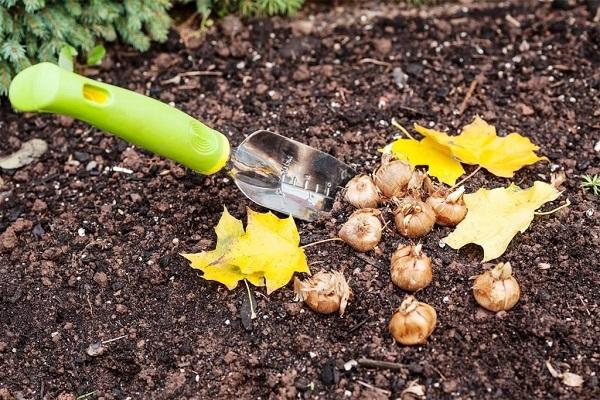
Before planting, they are soaked in a weak solution of potassium permanganate for half an hour. This procedure is necessary to prevent fungal diseases. To stimulate growth and rooting, the bulbs are recommended to be treated with special preparations according to the instructions.
Site selection and preparation
Daffodils tolerate darkening well, but it is better to avoid it - in the shade they will not bloom profusely. Any low-growing spring flowers with a small root system are suitable as neighbors. Lupines, clover, and alfalfa are considered good predecessors.
For a daffodil of the Chanterel variety, the quality of the site is important - a place where water constantly stands and accumulates is not suitable. This threatens with the fact that in early spring the bulbs will rot, and in late autumn they will freeze and die.
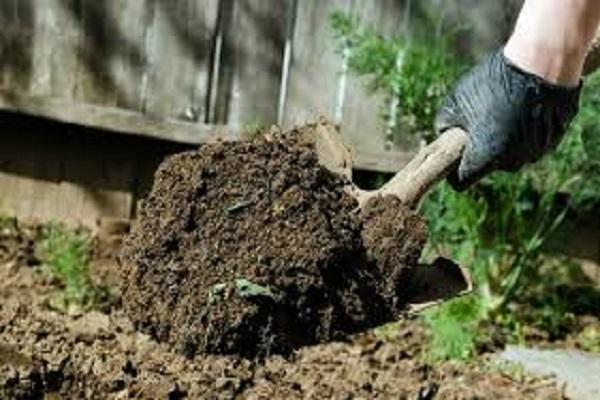
The site is prepared as follows: remove 30-40 cm of the top layer of soil, place expanded clay or crushed stone on the bottom, and 7-8 cm of sand on top. Next, a layer of fertile soil is poured so that the bed is above the main level. This is done to ensure the drainage of melt water.
Planting process
After preparing the planting material and arranging the site, you can start planting. The depth of the hole depends on the size of the bulbs and the soil. If the ground is heavy, then they are laid no more than 10-12 cm, for the lungs - 20-22 cm. In order for the planting to be larger, no more than 3 bulbs are planted in 1 hole.
So that the plants do not oppress each other, they are placed at a distance of 15-18 cm. A little sand is poured at the bottom, planting material is laid, covered with fertile soil and mulched with peat or humus.

The nuances of caring for the variety
Narcissus Chanterel is a varietal flower bred artificially. Therefore, it requires more careful care in comparison with its wild relatives, especially in the first season.
After the snow melts, the insulation (if used) is removed from the garden. Then they begin to loosen the soil and top dressing. This is done in order for the plant to “come to its senses” faster and release the first leaves and inflorescences.
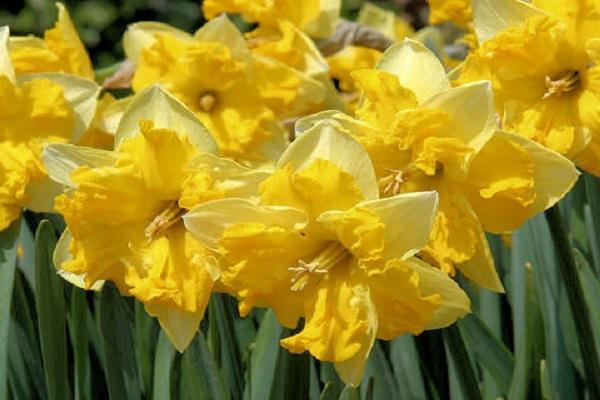
Watering rules
During flowering, daffodils are watered gently under the base. With a large pressure of water, you can bend and break the stem of the inflorescence and drive the leaves into the ground.
After flowering, daffodils begin the growing season. During it, the bulbs are stocked with nutrients for further reproduction: the process of forming elements of young plants begins. Watering is also required during it.
Then the green leaves begin to wilt and the watering is reduced. This usually happens before the end of June or the beginning of July.
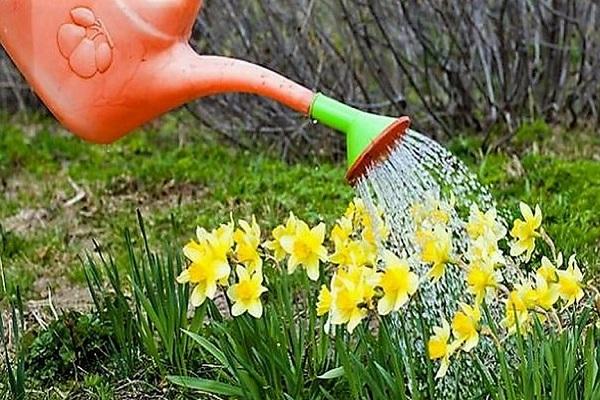
Fertilization
In order for the daffodil to bloom profusely and reproduce well, it needs to be fed. The need for additional nutrients increases during the appearance of the first leaves and inflorescences.
The choice of fertilizer and the frequency of fertilizing are selected based on the characteristics of the soil. For example, mineral fertilizers Nitroammofoski are applied to poor soil in 4 approaches - during germination, bud formation, flowering and after the inflorescence withers. On fertile soils, the amount of dressing is reduced to 2-3 per year.
Crop pruning
After flowering, the leaves of the daffodils are not cut off. With the help of them, nutrients and starch formed through photosynthesis are supplied to the bulbs. Better to wait until they dry up on their own.
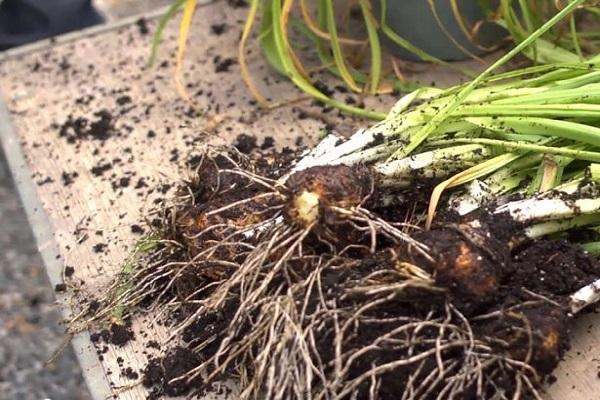
Wintering
Narcissus is a perennial bulbous plant. It does not require frequent replanting, so it is not necessary to dig it out every year in a fairly mild winter. If the climate is cold, then it is better to take care of the plant in advance - to insulate the plantings with peat or fallen leaves.
Protection from diseases and pests
Bulbous plants are susceptible to fungal diseases, so planting material should be stored in a well-ventilated, dry and dark place. Sclerocial rot and other types of mold are the most dangerous for daffodils, therefore, at the first signs of decay, the affected bulb is removed, and the remaining ones are treated with special preparations before planting.
For adult plants growing in open ground, onion and daffodil flies, hoverflies are dangerous. To get rid of them, plantings are treated with insecticides. When the soil is infected with root nematodes, the funds are applied to the fertile layer. From spider mites, treatments with Fitoverm will help.

Flower propagation
Narcissus Chanterel should be propagated with bulbs. They begin to do this about 3-4 years after planting.
To do this, the plant is dug up at the end of summer, dried. One onion can be divided into 3-5 parts as follows:
- the top is carefully cut off with a sharp knife;
- divided into segments;
- the slices are treated with a weak solution of potassium permanganate;
- placed in moist peat for 3-4 months, at a temperature of 16 to 20 C.
After the sprouts appear, they are transplanted into containers with a mixture of peat and sand in a 3/1 ratio. They are harvested for the winter in a dark cool place, in the spring they are transplanted into the ground.
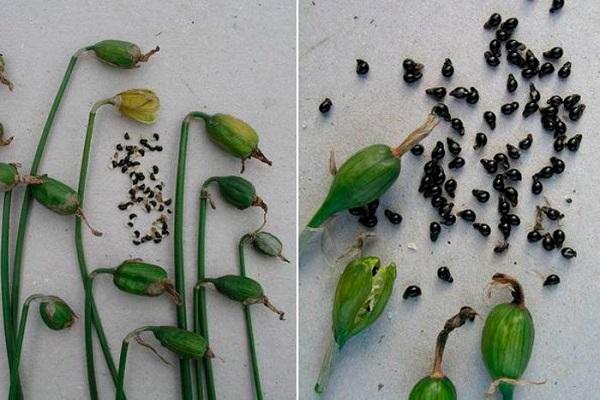
Application of Chanterel in landscape design
When choosing a place to plant daffodils, you should give preference to open flower beds with low-growing plants. "Neighbors" should surround them so that after withering they would not be seen. Late flowering crops with rich colors should be preferred - they can distract attention from the yellow leaves.
Narcissus Chanterel has a bright yellow inflorescence. To emphasize it, do not plant the flowerbed with other varieties of this plant with the same flowering period - it may get lost among others.

